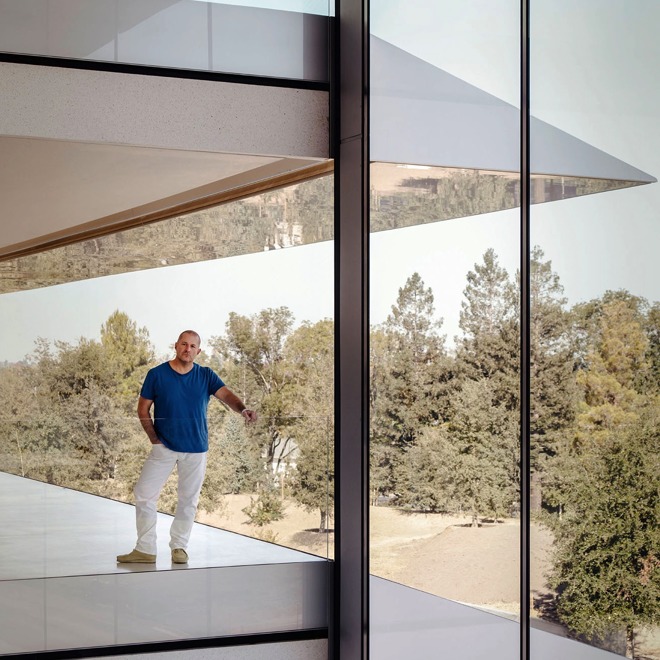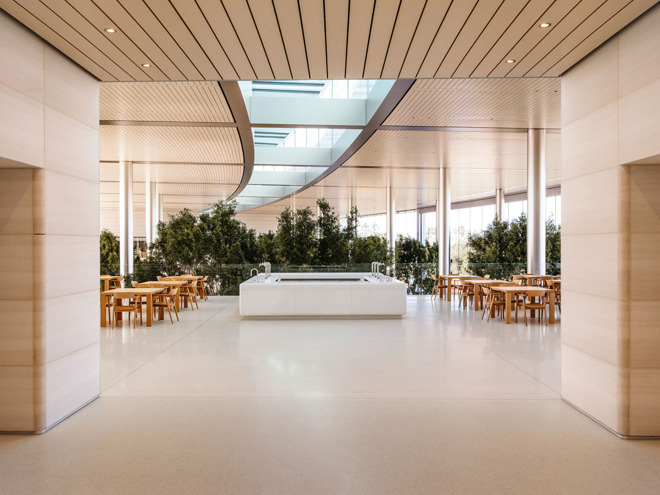As part of a longer piece about Apple Park, Apple Chief Design Officer Jony Ive spoke about Apple as it stands, with change as a central theme to where Apple has been, is now, and how it uses change and evolution to survive.

Apple Park
In an interview published on Thursday, Ive spoke in depth to Wallpaper* magazine about Apple's relationship with the facility's architects, Foster + Partners, and how Apple's need to evolve and change was central to the design process of the building.
"I don't think it is necessary to be explicit about its flexibility, but that flexibility is absolutely as powerful as in buildings where the primary story, is 'Hey, you can reconfigure this.'" said Ive. "Our building is very configurable and you can very quickly create large open spaces or you can configure lots of smaller private offices. The building will change and it will evolve."
Ive notes that in the new campus, different design disciplines can more easily mix than in the past. Additionally, collaboration and the need to change how that happens was a central ethos of the design.

"I'm sure in 20 years' time we will be designing and developing very different products, and just that alone will drive the campus to evolve and change." added Ive. "And actually, I'm much more interested in being able to see the landscape, that is a much more important capability."
iPhone X in a year
Ive would rather users look at the iPhone X less because it is all-screen, and more because the entire iPhone is configurable, with no static Home button. The designer notes that the design is "out of the way" with the new device.
"I've always been fascinated by these products that are more general purpose." said Ive to Wallpaper*. "What I think is remarkable about the iPhone X is that its functionality is so determined by software. And because of the fluid nature of software, this product is going to change and evolve."
Focusing on change, Ive is looking forward to what happens to the iPhone X in software over the next year.
"In 12 months' time, this object will be able to do things that it can't now. I think that is extraordinary," added Ive. "I think we will look back on it and see it as a very significant point in terms of the products we have been developing."
Apple's changes over time
Ive was asked about how Apple has changed the industry, and how the industry has changed Apple.
"I remember being at college; there was this new development and a new set of challenges for designers, really starting with the launch of the Mac in 1984," answered Ive. "The fundamental function of an object could change in seconds and the orthodoxy around expressing function or having the physical object defined by its function wasn't relevant any more. To me this was extraordinary."
Jony Ive custom cover for the December issue of Wallpaper* magazine
The entire interview focused on Apple and its products as adaptable and ready to evolve at the whim of the company and at users. When asked about the legacy of Steve Jobs and how Apple has altered since he joined the company in the '90s, he returned to that concept.
"When I look back over the last 25 years, in some ways what seems most precious is not what we have made but how we have made it and what we have learned as a consequence of that," said Ive. "I always think that there are two products at the end of a program; there is the physical product or the service, the thing that you have managed to make, and then there is all that you have learned. The power of what you have learned enables you to do the next thing and it enables you to do the next thing better."
"The way that we work is quietly," said Ive. We are conspicuously different in that and it is an important part of who we are."